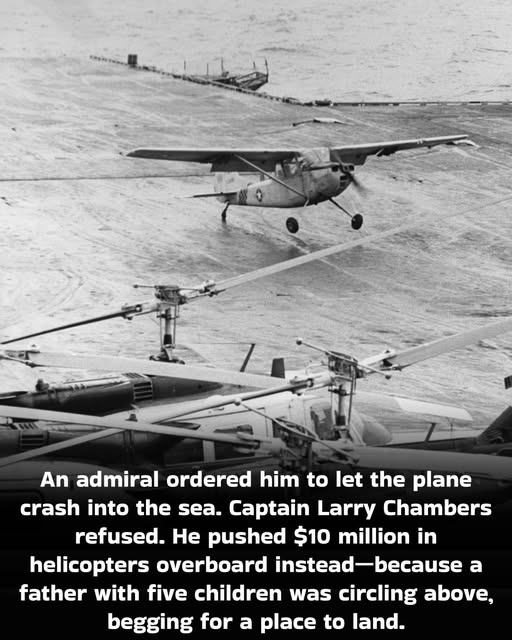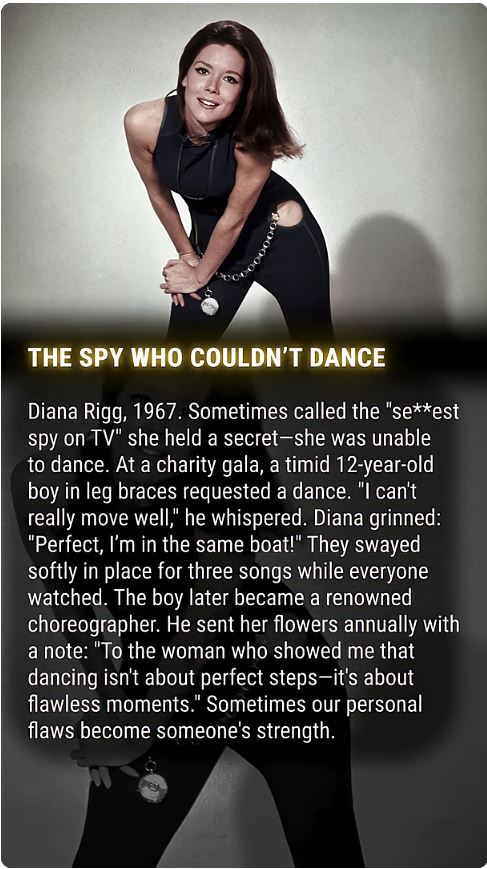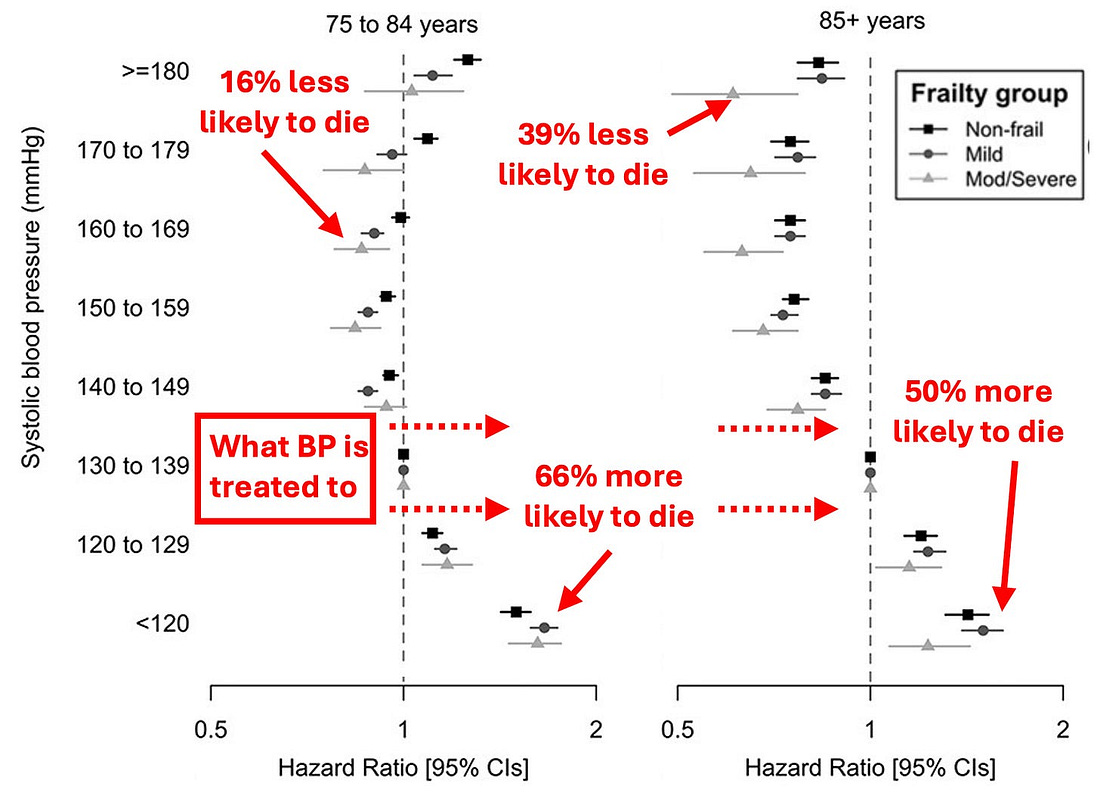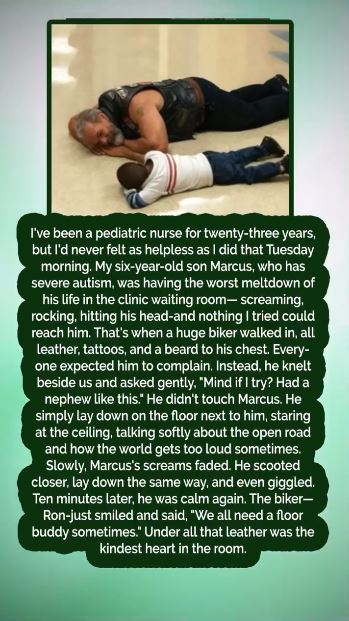
Natural Anti-Cancer Agents

Landmark analysis identifies 12 natural compounds with broad anti-cancer activity, consistently targeting core pathways such as cell death, immune evasion, metabolic dysfunction, and metastasis.
A landmark 2025 review titled, Natural anti-cancer products: insights from herbal medicine, published in Chinese Medicine, pulled together more than 1,100 scientific studies and uncovered something extraordinary: across cell, animal, and multi-omics research, 12 natural compounds repeatedly showed potent anti-cancer activity—triggering cancer cell death, blocking metastasis, cutting off tumor blood supply, disrupting tumor metabolism, and reversing drug resistance. Notably, the vast majority of this evidence comes from studies published since 2019, reflecting a rapid surge of new research in this field.
Landmark analysis identifies 12 natural compounds with broad anti-cancer activity, consistently targeting core pathways such as cell death, immune evasion, metabolic dysfunction, and metastasis.
THE 12 NATURAL ANTI-CANCER COMPOUNDS
1. Apigenin (Chamomile)
Helps immune cells detect tumors (reduces PD-L1)
Slows growth signals inside cancer cells (inhibits PI3K/AKT, EGFR, ERK)
Improves chemotherapy responsiveness (reduces MDR1/P-gp activity)
Limits tissue invasion (suppresses NF-?B, MMP-2/9)
Induces cell death through several pathways (apoptosis, autophagy, ferroptosis)
2. Artemisinin (Sweet Wormwood)
Generates oxidative stress inside tumors (ROS, lipid peroxidation)
Restricts blood vessel formation (anti-angiogenic)
Slows cancer cell movement (reduces vimentin, N-cadherin)
Helps counter drug resistance (affects STAT3, AKT, HSP90)
Shows activity across many animal tumor models
3. Berberine (Coptis / Goldenseal)
Disrupts major growth pathways (PI3K/AKT, HER2, TGF-ß)
Reduces tumor-fueling inflammation (NF-?B)
Helps reverse drug resistance (P-gp, MRP1, NRF2)
Lowers immune evasion signals (PD-L1)
Reduces metastatic behavior (MMP-2/9)
4. Curcumin (Turmeric)
Triggers cancer cell death (apoptosis, autophagy, ferroptosis)
Lowers inflammation inside tumors (NF-?B, STAT3)
Blocks blood vessel growth (VEGF inhibition)
Helps reverse chemotherapy resistance (P-gp, BCRP)
Reduces invasive behavior (Twist1, MMP-9, EMT markers)
5. Emodin (Rhubarb Root / Japanese Knotweed)
Interferes with cancer cell communication (Wnt/ß-catenin, STAT3, NF-?B)
Initiates several types of cell death (necroptosis, ferroptosis)
Disrupts cancer metabolism (GLUT1 reduction)
Limits spread by reducing enzymes that break tissue barriers (MMP-2/9)
Helps counter drug resistance (P-gp, GST)
6. EGCG (Green Tea)
Slows growth by interrupting major pathways (PI3K/AKT/mTOR)
Promotes programmed cell death (Bax?, Bcl-2?)
Reduces inflammation (STAT3)
Inhibits invasion and angiogenesis (MMP-2/9, VEGF)
Decreases drug resistance (P-gp suppression)
7. Ginsenosides (Ginseng)
Reduce metastatic behavior (EMT inhibition, MMP suppression)
Improve immune responses (STAT3 downregulation)
Promote cancer cell death (caspase activation)
Help restore normal growth regulation (p53, PTEN)
Some forms influence gut microbiota related to tumor microenvironments
8. Icariin / Icaritin (Horny Goat Weed)
Support immune recognition of tumors (CD8+ T cells, CXCL9/10)
Reduce PD-L1 (a key shield tumors use to hide)
Inhibit tumor growth signals (PI3K/AKT)
Counteract chemotherapy resistance (P-gp, MRP1)
Improve cell adhesion and reduce invasiveness (E-cadherin upregulation)
9. Resveratrol (Grapes, Berries)
Activates protective genes (p53)
Reduces inflammation (NF-?B)
Slows invasive behavior (vimentin?, EMT?)
Initiates multiple cell death pathways (apoptosis, autophagy, ferroptosis)
Shows synergy with conventional treatments
10. Silibinin (Milk Thistle)
Slows growth signals (mTOR, STAT3)
Reduces tumor blood vessel development (anti-angiogenic)
Limits spread (Wnt/ß-catenin inhibition)
Supports mitochondrial function
Decreases PD-L1 expression
11. Triptolide (Thunder God Vine)
Very potent at low concentrations (nanomolar range)
Blocks multiple tumor-promoting pathways (NF-?B, STAT3, AKT/mTOR)
Lowers immune evasion signals (PD-L1, CD47)
Promotes apoptosis and cell-cycle arrest
12. Ursolic Acid (Apples, Basil, Rosemary)
Promotes cell death pathways (p53, ROS)
Slows tumor growth (AKT/mTOR inhibition)
Limits metastatic movement (CXCL12, FN1)
Helps reduce drug resistance
Activates stress pathways related to ferroptosis (NRF2 suppression)
Although the review does not provide detailed clinical trial outcomes, it assembles one of the most comprehensive collections of preclinical evidence ever compiled on how natural compounds act on cancer. Across cell studies, xenograft models, orthotopic tumors, and multi-omics analyses, the findings converge on a striking pattern: these molecules consistently disrupt the same core pathways that fuel tumor growth, immune evasion, metastasis, and treatment resistance.
Importantly, several of these compounds—such as curcumin, artemisinin derivatives, ginsenosides, icaritin, silibinin, and resveratrol—are no longer confined to laboratory research. Multiple early-stage and mid-stage clinical trials are already underway, and in the case of icaritin and certain ginsenosides, Phase II and Phase III studies are actively progressing. The scientific community is clearly beginning to take notice.
With cancer rates rising worldwide, these well-tolerated, multi-pathway natural compounds should be advanced into rigorous clinical testing to fully determine their therapeutic potential in human disease.
Source: https://www.thefocalpoints.com/p/over-1100-studies-reveal-12-natural
Why the SARS-CoV-2 Spike Protein May Reduce Human Longevity
Vaccine enthusiasts may not live to be super-agers
The SARS-CoV-2 virus, responsible for COVID-19, owes much of its pathogenicity to its Spike protein—a multifunctional structure that facilitates viral entry into host cells via ACE2 receptors. While the acute effects of COVID-19 have been widely studied, emerging evidence suggests that the Spike protein’s persistence in human tissues may have profound long-term consequences, potentially reducing human longevity. COVID-19 vaccination with mRNA or adenoviral DNA appears to be far worse than infection in terms of loading the body with Spike protein, which is full-length in the prefusion conformation, trimerized, and highly pathogenic.
(Tom: This destructive action of the Spike Protein is why I have created a combination of the ingredients reputed or proven to benefit those suffering from Spike Protein damage. Read more about it here: https://www.healthelicious.com.au/NutriBlast-Anti-Spike.html)
https://www.thefocalpoints.com/p/why-the-sars-cov-2-spike-protein
Nattokinase Experimentally Eliminates 84% of Amyloid Microclots — a Pathology Recently Found in 100% of COVID-19 Vaccinated Individuals Tested
Maria and I also confronted the deeper question: Why have health agencies done nothing? Top officials at HHS have been repeatedly notified of these findings, yet they refuse to act.
Their silence keeps millions in harm’s way while the shots continue — and while zero funding goes toward identifying or treating this new pathology.
In my interview with Maria Zeee on the Daily Pulse, we walked through what is now shaping up to be one of the most urgent and ignored public health emergencies of the post-COVID era.
These misfolded fibrin clots are structurally abnormal, resistant to normal breakdown, and capable of accumulating inflammatory molecules, DNA, and other debris. They are likely also behind the long, rubbery, white fibrous clots that embalmers are pulling out of bodies worldwide.
https://open.substack.com/pub/petermcculloughmd/p/breakthrough-nattokinase-experimentally
COVID-19 vaccination was linked to almost 70,000 fewer US live births in 2023
Jarle’s analysis identifies a statistically significant demographic anomaly consistent with other early-warning fertility signals. This should be investigated, not ignored.
CDC data from 566 US counties, with a combined population of nearly 260 million, show that COVID-19 vaccination in 2023 was significantly linked to fewer live births. Extrapolating these findings to the entire US population estimates 69,598 fewer births (95% CI: -111,215; -27,981), representing a 1.90 percent reduction (95% CI: -3.01; -.785). Additionally, the vaccine was linked to fewer births in 2022, but the association was not statistically significant that year.
In a previous post, I showed that COVID-19 vaccination caused over 138,000 US deaths in 2022 and over 150,000 in 2023. Hence, COVID-19 vaccination has decimated the US population by increasing deaths and decreasing births, which follow-up research should explain.
A concern beyond what I described above is that the vaccine seems to have induced an increasing trend in deaths and a decreasing trend in births, which follow-up research should monitor and eventually also explain.
Finish reading: https://open.substack.com/pub/jarle/p/covid-19-vaccination-was-linked-to
The Probiotic Myth: Why “Good Bacteria” Aren’t Enough to Heal Your Gut

I received an emailed ad for a new product that contains some data I had not seen before. Took me down an interesting path of discovery about which I will share more later.
Here is some of the ad and a link to the rest of it:
Discover the groundbreaking “phage” technology that succeeds where probiotics and restrictive diets fail – and can target bloating, constipation, and digestive distress in just hours.
If you’re like most people with chronic bloating, constipation, or other digestive woes, you’ve probably been told that probiotics are the answer.
Just flood your gut with “good bacteria,” they say, and watch your symptoms disappear.
But what if I told you that probiotics are not the gut-healing cure-all they’re cracked up to be?
In fact, for some people, they can actually make digestive issues worse.
The truth is, when it comes to lasting relief from gut distress, adding more bacteria – even the “good” kind – is like trying to weed an overgrown garden by planting more flowers.
It doesn’t directly address the root of the problem.
So what does?
Cutting-edge research has revealed a remarkable new approach that succeeds where probiotics and restrictive diets fail.
It’s called bacteriophage therapy, and it’s based on a simple but profound idea:
Instead of just adding more bacteria to your gut, what if you could precisely target and eliminate the “bad guys” causing all the trouble?
https://start.goodnesslover.com/bacteriophage-article-probiotics-25blackfriday/
The Spy Who Could Not Dance

What They Never Tell Us About Salt
Why natural salt is essential for health
A Midwestern Doctor
Story at a glance:
•For 50 years, medicine has waged a misguided war against critical sources of health like salt and sunlight while avoiding discussing the real causes of diseases. Because of this, the dangers of salt are relentlessly focused on despite evidence not supporting them.
•In parallel, the extreme dangers of consuming too little salt are rarely discussed in the medical field—despite dangerously low sodium being one of the most common conditions seen in hospitalized patients, and chronically low sodium greatly increasing one’s risk of dying.
•The war against salt originated from the belief salt raises blood pressure—despite the evidence showing it doesn’t.
•Many of the foundational beliefs around high blood pressure are not supported by the existing data, leading to situations where patients are routinely medicated to blood pressures far below what is safe, significantly reducing their quality of life and increasing their risk of severe injuries or death.
•Salt restriction creates many similar complications to dangerously low blood pressures (e.g., fatigue, lightheadedness, erectile dysfunction). Because of this, many find their health and energy dramatically improves once they start consuming healthy salts.
•This article will cover some of the key dangers associated with salt restriction and strategies for locating the healthiest natural salts.
Many medical policies are driven more by profit than by evidence of what truly benefits patients. Because of this, we frequently see medicine refuse to ever discuss the things that are making us sick (e.g., numerous studies show vaccines make children 2-10X more likely to develop chronic illnesses that are now widespread) while in tandem, we are relentlessly pressured to put all focus onto a few things which do not make enough money for lobbyists to defend them.
In this article, I will explore one of my key frustrations with this dynamic: the medical establishment’s ongoing war on salt. In this article, I will focus on one of my major frustrations with this medical paradigm—the war against salt.
Note: the war against salt began in 1977 when a Senate Committee published dietary guidelines arguing for reduced sodium consumption despite the existing evidence not supporting this. Since then, like many other bad policies, it has developed an nearly unstoppable inertia of its own.
The Forgotten Side of Medicine is a reader-supported publication. To receive new posts and support my work, consider becoming a free or paid subscriber. To learn more about this newsletter and how others have benefitted from it, click here!
Is Salt Bad For You?
Many people you ask, particularly those in the medical field will tell you salt is bad, and one of the most common pieces of health advice given both inside and outside of medicine is to eat less salt.
Over the years, I’ve heard two main arguments for why salt is bad for you.
First, salt raises blood pressure, and high blood pressure is deadly, so salt is too and should be avoided.
Second, with individuals who have heart failure, eating too many salty foods will create exacerbations of their condition, and as a result, after holidays where people eat those foods (e.g., the 4th of July) more heart failure patients will be admitted to hospitals for heart failure exacerbations.
Note: excessive sodium causes these exacerbations because if an excess amount of fluid accumulates in a compromised system (e.g., because the weakened heart can’t move enough blood to the kidneys to eliminate it), it then overloads other parts of the body (e.g., causing swelling and edema, which, if in the lungs, can be life threatening).
Because of these two things, many in the medical field assume that salt must be bad for you and hence strongly urge patients to avoid it (to the point you often see an elderly patient who loves her salt be aggressively pushed into abandoning it). Unfortunately, the logic behind those two arguments’ logic is less solid than it appears.
The Great Blood Pressure Scam
Since medicine revolves around making money, patient care is often structured to be as profitable as possible. In turn, since recurring revenue is a foundational principle of successful businesses, a key goal in medicine often ends up being to have as many patients as possible on lifelong prescriptions.
In most cases, the drugs that are developed and approved have real value for specific situations, but those situations are not enough to cover the exorbitant cost it requires to get a drug to market. As a result, once drugs are approved, the industry will gradually come up with reasons to give them to more and more people and in turn quickly arrive at the point where many of their customers have greater harm than benefit from the pharmaceutical.
One classic way this is done is by creating a drug that treats a number, asserting that the number has to be within a certain range for someone to be healthy, and then once that is enshrined, narrow and narrow the acceptable range so less and less people are “healthy” and hence need the drug (e.g., this happened with cholesterol once statins were invested). Likewise, this characterizes the history of blood pressure management:
Because of this, many people (particularly the elderly) are frequently pushed to excessively low blood pressures which reduces critical blood perfusion for the organs—which particularly unfortunate as high blood pressure is often a symptom of poor circulation rather than its cause.
As such, reducing the remaining circulation by lowering blood pressure then makes them significantly more likely to get a variety of significant issues (e.g., kidney injuries, cognitive impairment, macular degeneration), the most studied of which is lightheadedness or fainting leading to (often devastating) falls. Additionally, blood pressure medications also often greatly reduce one’s quality of life (e.g., by causing fatigue or erectile dysfunction).
Note: for those interested in learning more about the great blood pressure scam (a lot of what we’re taught about blood pressure is less than accurate), it can be read here.
Low Sodium
A cornerstone of cementing the blood pressure market has been to make everyone terrified of salt (much in the same way making people terrified of the sun is a cornerstone of the lucrative skin cancer treatment market—despite the fact the deadly skin cancers are actually due to a lack of sunlight).
Remarkably, much like the great dermatology scam (which has been able to make a massive amount of money from removing cancers that almost never become life threatening) the link between blood pressure and salt consumption is actual quite tenuous.
For example, the most detailed review of this subject found that drastic salt reduction typically results in less than a 1% reduction in blood pressure. Likewise, doctors rarely recognize that patients in the hospital are routinely given large amounts of IV 0.9% sodium chloride, in many cases receiving ten times the daily recommended sodium chloride we are supposed to consume—yet their blood pressure often barely rises.
Note: some individuals and certain ethnicities are salt-sensitive. They may experience greater increases in blood pressure or worsening of other symptoms when consuming moderate amounts of salt (although this does not apply to the majority of the population).
Despite this, patients are often pushed to eliminate all (or almost all) salt from their life. Beyond this significantly reducing their quality of life (as people like salty foods) it can be dangerous. For example:
•A study of 181 countries found that countries with lower salt consumption have shorter life expectancies.
•Low sodium levels (hyponatremia) are strongly correlated with a risk of dying (e.g., the salt consumption target we are recommended to follow increases one’s risk of dying by 25%). Likewise, a common reason for hospital admissions, are symptoms resulting from hyponatremia (as once sodium levels get too low, it can be very dangerous), and 15-20% of hospitalized patients have low sodium levels at admission.
Note: mild hyponatremia is also associated with an increased risk of death.
•Reduced salt consumption, not surprisingly, increases one’s risk of hyponatremia (e.g., one study one study found salt restriction made hypertensive patients 9.9 times more likely to develop hyponatremia).
Note: many blood pressure and psychiatric medications put you at risk for dangerously low sodium levels (e.g., SSRI antidepressants make you 3.16 times more likely to develop hyponatremia). Additionally, certain patients (e.g., those with autonomic nervous issues) are much more sensitive to salt restriction causing hypotension (low blood pressure).
• Low dietary sodium intake causes a 34% increase in cardiovascular disease and death.
•Rapidly lowering blood sodium levels reduces cardiac output and blood pressure in a manner resembling traumatic shock (which frequently raises the heart rate as the heart tries to compensate for insufficient blood). Low salt consumption, in turn, has been repeatedly linked to tachycardia (and atrial fibrillation).
•Aging kidneys have a reduced ability to respond to changes in blood sodium levels (putting them at greater risk for hyponatremia following sodium deprivation).
Note: three of the most common symptoms of hyponatremia (which lead people to go to the Emergency Room) are fatigue, confusion and difficulty concentrating.
•Many have reported discovering low salt consumption was the cause of their fatigue and lightheadedness (which has also been proven in a clinical trial which treated postural orthostatic tachycardia syndrome with increasing dietary sodium).
Note: chronically low blood pressure (e.g., POTS) has been shown to be one cause of chronic fatigue syndrome,1,2 and POTS is often treated with increased dietary sodium.
•Chronic sodium depletion has been linked to fatigue and insomnia.
•Many readers have shared with me that a variety of health issues improved once they began consuming natural salt (e.g., headaches, erectile dysfunction, waking up in the middle of the night or chronically elevated blood pressures).
Note: a variety of other health issues (e.g., worsening of diabetes or a stomach hydrochloric acid deficiency) have also been linked to insufficient dietary sodium.
U-Shaped Curves
Frequently in physiology, a number will be observed which, when improved, appears to correlate with improved health, leading to the assumption as much as possible should be done to improve that number. In many cases however, at some point, the effect reverses, and it becomes harmful to further increase or decrease that number. For example, with blood pressure, a few data points showed that if it’s too high, it increases one’s risk of death, so this was used to create a linear model which extrapolated that trend to much lower blood pressure values.
Yet, in real life, once blood pressure gets too low, the trend reverses and one’s risk of dying increases rather than decreases:

Likewise, both high and low sodium diets have been shown to increase the risk of death. This U-shaped curve was best demonstrated in a study of chronic kidney disease and heart failure patients:

Note: due to excessive sodium consumption causing HF exacerbations, those patients are often told to avoid dietary sodium, yet there are many cases of them improving once they add some salt back into their diet (as they had been on the left side of this curve). While this has long been known within the integrative health field, in the last few years, data at last is emerging to support this,1,2,3 and Europe is beginning to rescind salt restriction recommendations for heart failure patients.
Zeta Potential Curves
When fluid contains suspended particles (which is true for most fluids in nature), those colloids can either have finely dispersed or clumped together particles. One of the primary determinants of this is the electrical repulsion or attraction between the particles, something quantified by a system’s zeta potential and heavily influenced by the charges present in a solution (e.g, too many positive charges will make fluid components like blood cells clump together and is why the aluminum in vaccinations frequently trigger microstrokes of varying severity). In turn, many diseases result from poor zeta potential, including poor circulation and fluid congestion or edema (e.g., that seen in heart failure).
One critical aspect of zeta potential is that it follows a U-shaped curve in relationship to the amount of a charged ion present, with both too little or too much of it being problematic.
Note: giving IV sodium infusions to hospital patients will frequently greatly improve their condition, something nonchalantly attributed to everyone being “dehydrated” but more accurately due to their blood sodium being too low to adequately support the physiologic zeta potential. Likewise, many people often feel much better after getting outpatient saline infusions at concierge hydration clinics.
This in turn helps to explain why too little salt (e.g., through intentional sodium restriction or unintentional sodium restriction through a diet that puts you into ketosis [which increases sodium excretion]) can be problematic while at the same time high salt diets can be problematic as well.
Healthy Salts
With high salt diets, I believe a few points are particularly important to recognize:
1. I’ve had multiple cases where I ate fairly salty foods right before bed, then woke up feeling extremely dry throughout my body with a fast heart rate. Through trial and error I figured out drinking high quality reverse osmosis water would help me feel better.
Later, from reading Thomas Riddick’s work on zeta potential, I understood what was happening and measured the conductivity in my urine, which showed that my kidneys indeed were trying to dump a large amount of sodium and restore my zeta potential. Riddick, tracked many cases where more severe versions of what I experienced resulted in cardiovascular incidents (as poor zeta potential causes blood to clot together and triggers heart arrhythmias as the heart struggles to push this congested blood).
Note: many have reported to me that zeta potential restoring protocols fixed their atrial fibrillation.
2 Riddick (and those who followed him) found that processed foods and many restaurant meals tended to be problematic for zeta potential and hence advised reducing the frequency of their consumption (e.g., I try to minimize eating out because of the congestion I feel after restaurant meals).
Note: since there are so many other harmful things in processed foods, it is very possible many of the issues associated with salty foods are due to something else that is present in it (e.g., seed oils or toxic additives).
3. Riddick believed one of our key issues with salt was that potassium was better for zeta potential than sodium, so by switching our potassium based sources of salt (e.g., vegetables) for highly salted foods, we were creating an unhealthy balance between the two. Likewise, modern research has shown adequate potassium alongside sodium is critical for cardiovascular health (e.g., normalizing blood pressure).
Note: potassium deficiency causes a variety of issues (e.g., fatigue and muscle cramps) and many practitioners over the years have found supplementary potassium greatly helps their patients.
4. In general, I noticed most of the salt overload issues individuals run into come from eating foods high in refined salt (e.g., salty processed foods) rather than those consuming natural salts. This has led me to suspect that a major issue with salt is either something else present in the processed foods or something specific to processed salts. At this point, my best guesses is that is due to refined salts:
•Lacking minerals we otherwise need for homeostasis.
•Containing other problematic additives (e.g., refined salt tends to clump together so it requires anti-caking agents, many of which adversely affect zeta potential).
•Having a refinement process that introduces unhealthy chemicals to the salt (e.g., sodium carbonate, sodium hydroxide, barium chloride or barium carbonate are used to remove minerals besides sodium from refined salt).
Note: their bleaching or heating may also be problematic.
As such, we always advise patients to consume natural salts and have found this helps patients while rarely causing issues.
Note: in many cases, the best results with a natural salt are gotten if a small amount is mixed into water drank throughout the day, something I believe is due to fully dispersed salts (e.g., those pre-dissolved in water) being the best for restoring the physiologic zeta potential.
Conclusion:
As medical approaches to treating disease often do not address the root causes of illness, this requires creating easy scapegoats (e.g., the sun, or saturated fat, or eggs) to blame for their treatment failures. This is particularly unfortunate as those scapegoats are often actually essential for health. Fortunately (or unfortunately depending on how you look at it) our medical system is now bursting under the strain of the costs of those approaches and thanks to the ascendancy of the MAHA movement and the need to cut deficit spending, it is now becoming possible to re-examine the faulty assumptions public health rests upon.
We now have a real window to do this, and since there are so many different things that need to be seriously re-examined, my goal has been to do my part to help many of these things that have deeply frustrated me for decades at last be addressed. Fortunately, I am but one of many rising to the occasion, and I thank each of you for being part of that journey with me and doing what you can to bring health back to the world.
Author’s note: This is (reader requested) shortened version of a longer article that goes into more detail on the importance of salt and which natural salts are the healthiest for you. That article can be read here https://www.midwesterndoctor.com/p/the-truth-about-salt-efa, along with a companion article about the great blood pressure scam (which can be read here https://www.midwesterndoctor.com/p/the-great-blood-pressure-scam).
Wind Turbine Failures

Mark Smith writes:
The Kindest Heart In The Room

